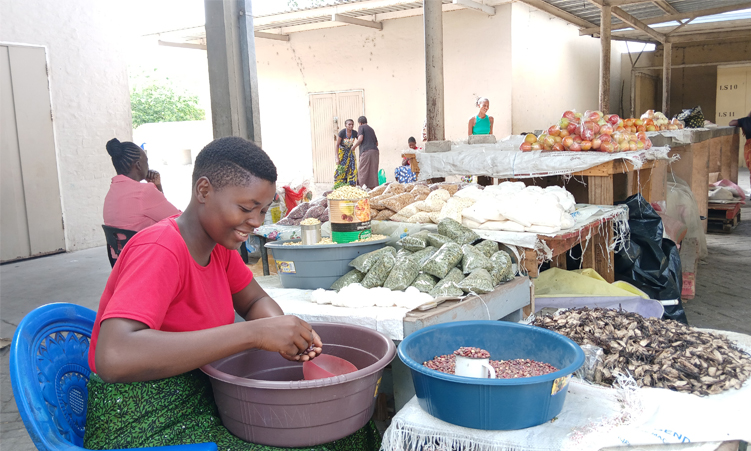• LUISE HOFFMANNTO raise awareness of our indigenous trees the forestry directorate each year determines a “Tree of the Year” and provides an illustrated brochure describing this particular tree.
This year’s “Tree of the Year” is the tamboti, which occurs mainly in the Karstveld, the area around Otavi, Grootfontein and Tsumeb, extending into the eastern parts of Etosha and also in northern Kaokoland. Identifiable by drooping branches and [mostly] a single straight trunk with a rough dark grey to black bark, it is sometimes the tree shading a lay-by along the roads in these areas or can be seen inside the road reserves [photo].
Names: A. tambotie; E. African sandalwood; G. Tambuti; H. orupapa; D/N. auib, awuib; Ky. Nd. omuhongo. Spirostachys means a ‘spirally formed spike’ referring to the shape of the flower, africana tells us that this is an African tree.
The tamboti can reach a height of 1 metre and usually grows on rocky substrates, especially on calcrete and dolomite. The dark, rough bark splits into rectangular pieces while the first leaves in spring are reddish brown initially, turning dull dark green above and pale green below in the course of the season. Mostly egg-shaped with finely toothed margins the simple leaves again change colour and become a lovely coral to brilliant deep red in winter. The tamboti belongs to the Euphorbiaceae or spurge family and oozes milky latex from cuts in the bark or where a twig or leaf is broken off. This milky latex is very poisonous, causing blisters on the skin and serious damage to the eyes.
Traditional hunter-gatherers used this latex as an ingredient in their arrow poison.
Tamboti wood should not be used as fire wood. The smoke causes headaches while meat grilled over this wood is tainted by the smoke and causes nausea.
The three-lobed tamboti fruit are often infested with the larvae of a small grey moth (Emporia melanobasis) which, by moving spasmodically inside the seeds, turn them into ‘jumping beans’, being projected into the air by as much as 30cm. Tamboti heartwood is shiny dark brown, oily, very heavy, beautifully grained and said to be virtually indestructible. It polishes well.
Tamboti wood found in the Great Zimbabwe Ruins was carbon-dated to be 1250 to 1530 years old. In Namibia, during the first half of the 20th century, thousands of tamboti trees were cut around Tsumeb and Otavi to serve as mine props, but today this tree is protected by forestry legislation.
Many poisonous plants have medicinal properties and that also applies to the tamboti. In African folk medicine tambuti latex is rubbed onto ulcers and boils. The steam rising from boiling tamboti roots cures eye infections. A root decoction relieves stomach ulcers and also keeps maggots away from injuries sustained by cattle.
Tamboti wood has a permanent pleasant scent, hence the name “African Sandalwood”. The Herero people sprinkle pulverised leaves and twigs on the embers to purify their clothes in the aromatic smoke while tamboti slivers placed among clothing are said to keep away moths and other insects. The pulverised wood mixed with fat is rubbed into the hair as scent and scented necklaces are made from little cubes cut out of the hard-wood.
Stay informed with The Namibian – your source for credible journalism. Get in-depth reporting and opinions for
only N$85 a month. Invest in journalism, invest in democracy –
Subscribe Now!






